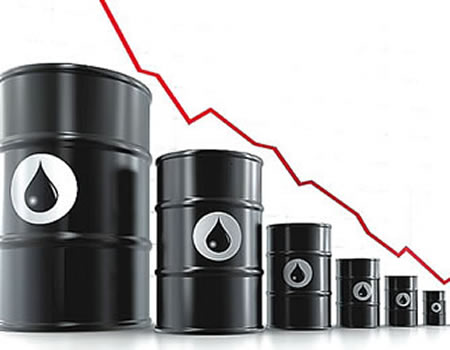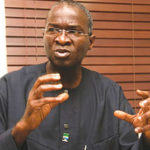CRUDE oil was discovered at Oloibiri, Bayelsa State, in 1958 and Nigeria became one of the few global crude oil producers and exporters. Prior to this discovery, Nigeria was practising a regional system where each region developed its natural endowments, remitted 30 per cent to the Federal Government, contributed 20 per cent to a common purse for national development and retained 50 per cent of proceeds from sales of the natural endowments.
However, after the First Republic, Nigeria cancelled regional system of government and created 12 states but now 36 states with a Federal Capital Territory, enacted decree that vested all natural resources in the hands of the Federal Government.
By implications, the Federal Government began to administer allocation of proceeds from sales of natural resources including crude oil deposits, mineral deposits and land tenure system for agriculture.
Oil boom era 1971-1980
In 1971, oil price rose from $3.60 per barrel to $37.42 per barrel in 1980. Prior to 1971, the share of agriculture to Gross Domestic Product (GDP) stood at 48.23 per cent. By 1977, it had declined to almost 21 per cent. Agricultural exports, as a percentage of total exports, which was 20.7 per cent in 1971, reduced to 5.71 per cent in 1977.
The discovery of oil in commercial quantity in late 1950s, coupled with the oil-boom resulting from the Arab oil embargo on the USA in 1973, affected the agricultural sector adversely. The economy became heavily dependent on crude oil.
By this time, oil revenue represented almost 90 per cent of foreign exchange earnings and about 85 per cent of total exports. While the boom afforded the government much needed revenue, it also created serious structural problems in the economy.
The agricultural sector was most hit. Rural urban migration increased, as people attempted to reap or benefit from the windfall from oil. Production of agricultural commodities for export declined. Food production became a problem. Starting from 1974, the economy became a net importer of basic foods. Huge foreign exchange earnings were utilised in importing food.
However, 1980 to 1990, was characterised by low oil price and drop in revenue for the government. Crude oil price fell from $35.75 per barrel in 1981 to $16.56 per barrel in 1999.
It was conspicuous that the government did not bridge the structural gap that existed during the oil boom, hence, the country was in technical recession. During this period, the government did not formulate policy that would attract the much needed investment to increase the oil reserves.
Moreover, experts posited that the Indigenisation Policy of the government in the 1970s dissuaded foreign investments into the country, hence the need for the country to rely on foreign loans.
The emergence of civilian administration after a prolonged military rule brought a sigh of relief for Nigerians with lots of hope. Between 2000 and 2014, Nigeria once again experienced an oil boom era which saw oil prices rise from $27.39 to $130 per barrel. Such period has never been recorded and may never be recorded again in the history of crude oil pricing.
This is because of emerging alternative energy to fossil fuel. Fracking and discovery of shale gas crashed the oil price post 2014 till date, new inventions like use of electricity to power vehicle and use of solar to generate electricity has really brought about new global energy mix.
Why the years of Nigerian crude are numbered?
There are strong indications that the years of Nigerian crude as sweet to foreign refineries are over. This is because most of these countries have set dates for non-usage of vehicles powered by fossil fuel.
Recently, the government of France said that it wants to end sales of gas and diesel powered vehicles by 2040 as it fights global warming. After that date, automakers will only be allowed to sell cars that run on electricity or other cleaner power. Hybrid cars will also be permitted. The share of cars powered by electric, hybrid and alternative fuels in France is minimal, about 4 per cent, but growing fast. Sales of those vehicles were up 25 per cent in the first quarter of 2017.
Germany has hinted that it’s only a matter of time before the country that invented the modern car sets an expiration date of its own. Some German towns and cities have already threatened to introduce their own diesel bans to curb pollution.
The government of India declared earlier this year that every vehicle sold in the country would be powered by electricity by 2030. Remember, India remains our largest crude oil importers.
In Norway, the government’s transportation plan outlines a clear target: All new passenger cars and vans sold in 2025 should be zero-emission vehicles. About 40 per cent of all cars sold in the country last year were electric or hybrid vehicles.
China is the world’s largest car market and it is working on a plan to ban the production and sale of vehicles powered only by fossil fuels. The ban will lead to a reduction of oil demand in China, as the country is currently the world’s second-largest oil consumer after the US. China wants electric battery cars and plug-in hybrids to account for at least one-fifth of its vehicle sales by 2025.
The UK said in July that it would ban sales of new gasoline and diesel cars starting in 2040 as part of a bid to clean up the country’s air. By 2050, all cars on the road are expected to have zero emissions. Nearly 2.7 million new cars were registered in the UK in 2016, making it the world’s sixth biggest market.
It was reported that at least eight other countries have electric car sales targets in place, according to the International Energy Agency.
They are Austria, Denmark, Ireland, Japan, the Netherlands, Portugal, Korea and Spain. They have set official targets for electric car sales.
Going forward
The Managing Director of Seplat Petroleum Development Company Plc, Austin Avuru, stated that in order to be insulated from all the global shocks that may arise following ban on vehicles using fossil fuel, “we must begin to develop indigenous technology, research and development that will result in full optimisation of Nigeria’s crude oil.”
On how best to develop indigenous technology, the Executive Secretary of Nigerian Content Development and Monitoring Board (NCDMB), Mr Simbi Wabote, identified five parameters needed for sustainable local content development. These include enabling regulatory framework, capacity building, gap analysis, research and development and incentives and funding.
According to him, “enabling regulatory framework backed by appropriate law is better than policies which are subjected to speculations. Capacity building is essential to spur domiciliation of a country’s technology which resulted into 26 per cent when compared with five per cent before the NCDMB ACT was created.
“Periodic gap analysis is essential to develop the gap that must be closed and to guide where resources are to be channeled.
“Incentives, whether physical or monetary, is essential to attract more investments into the country. “
On his part, the Minister of Science and Technology, Ogbonaya Onu, argued that diversification into other sectors like agriculture through science and technology would make the country survive the imminent challenges from non-attractiveness of fossil fuel in near future.
Onu, who was represented by Professor Okechukwu Ukwuoma at the NCDMB’s conference on research and development in Lagos, stated that “the Federal Government has demonstrated that it is diversifying through science and technological development that will lead us out. A nation that must develop must identify what distinguished it from others.
“Nigeria must not panic because we have resources. What should be done is how to develop those resources, localise global content and globalise local content. Let’s go beyond exploitation of resources but value addition to the resources. Value is being added in agriculture and it must be added in other sectors too.”
You May Also Like:
NNPC to automate DSDP scheme over international crude oil fraudsters
NNPC to automate DSDP scheme over international crude oil fraudsters






